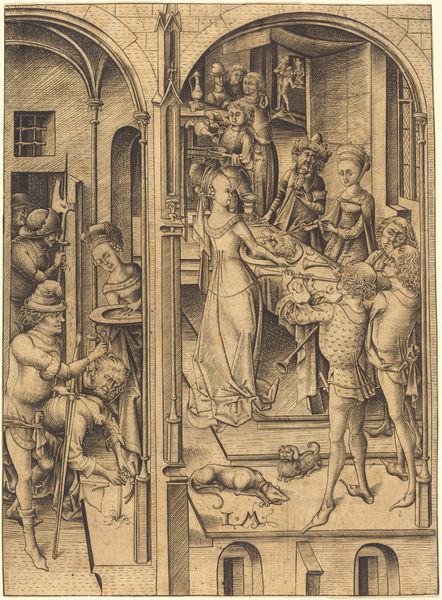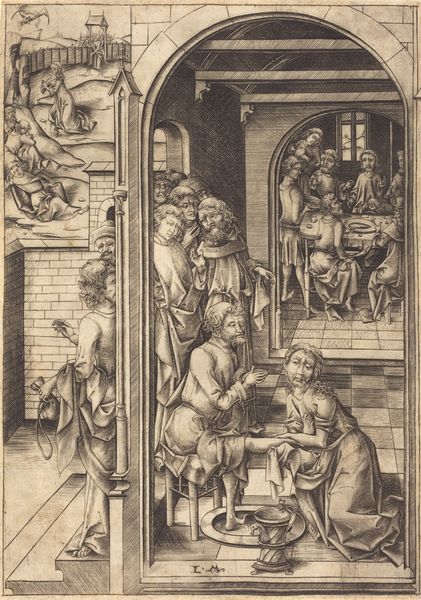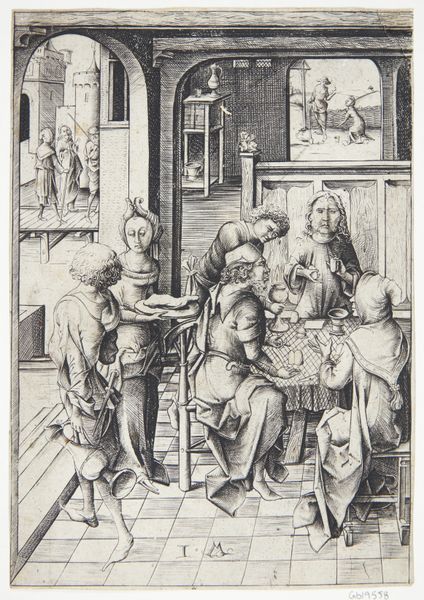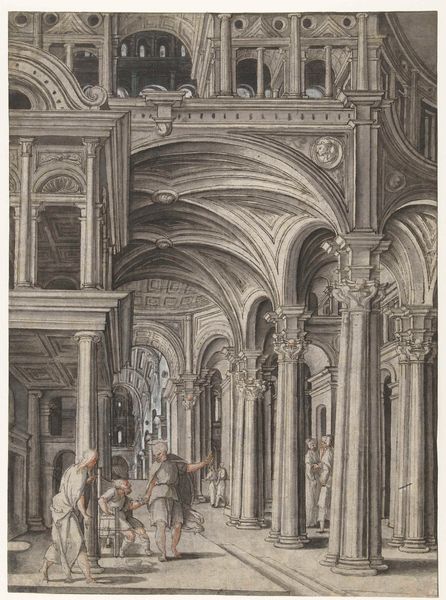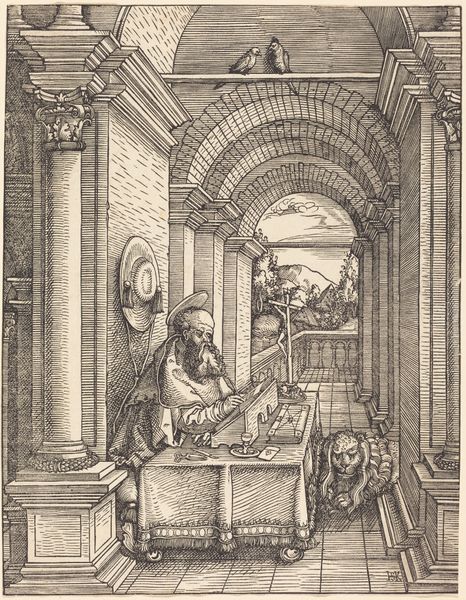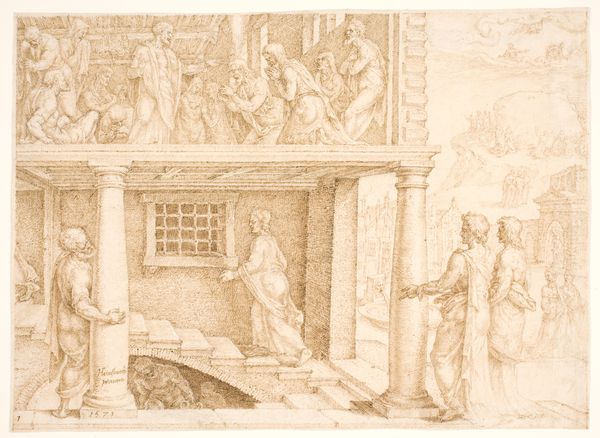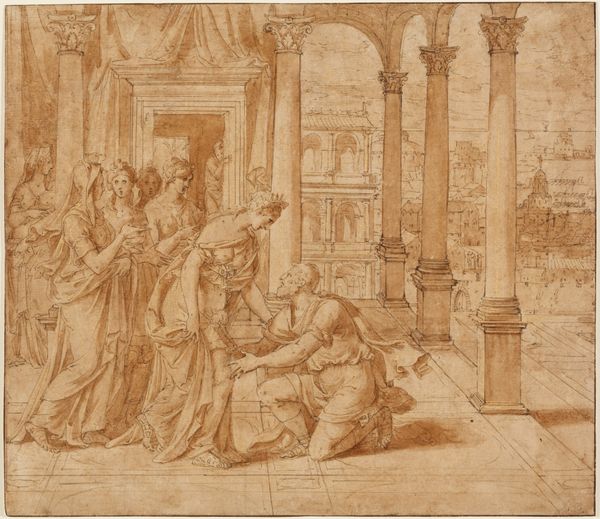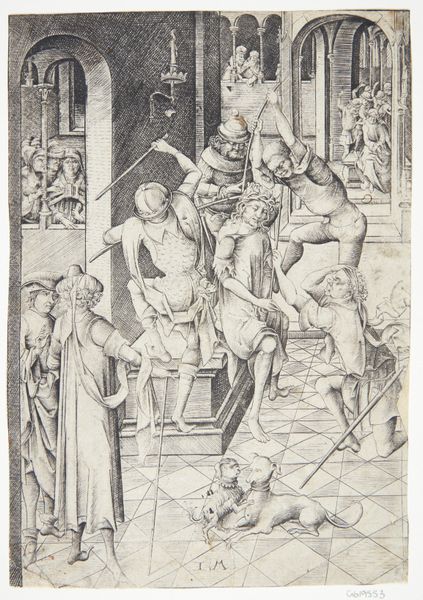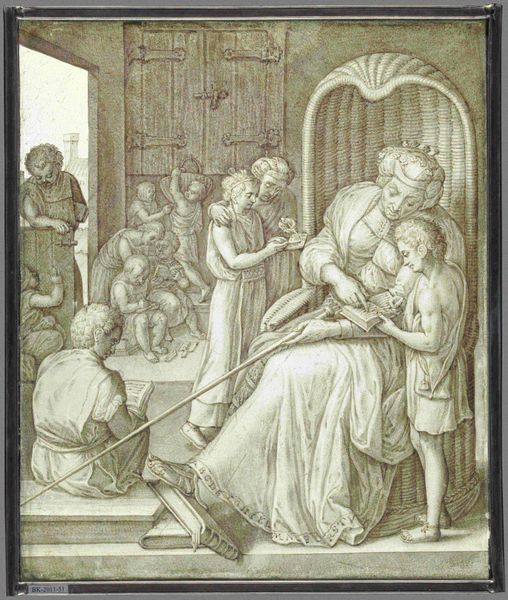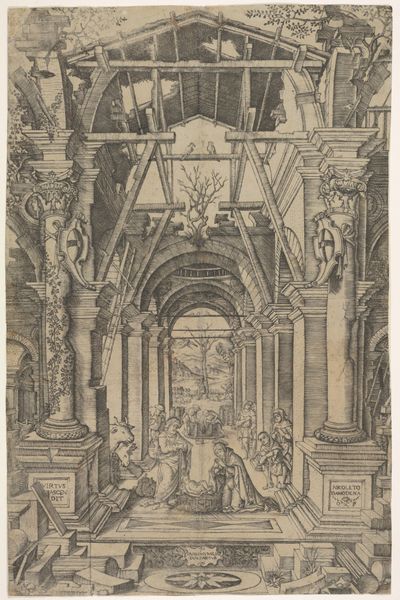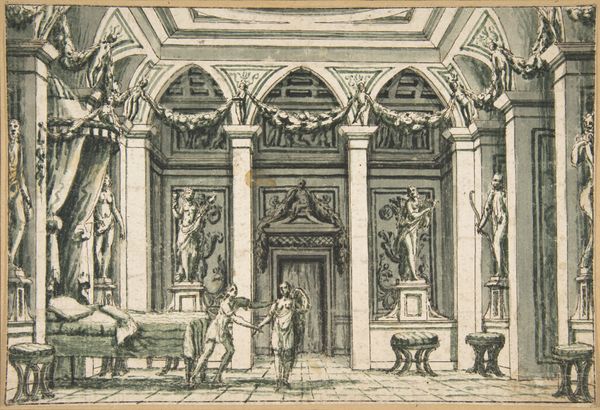
painting, oil-paint, fresco, photography
#
portrait
#
narrative-art
#
painting
#
oil-paint
#
landscape
#
holy-places
#
perspective
#
figuration
#
fresco
#
traditional architecture
#
photography
#
oil painting
#
earthy colours
#
child
#
arch
#
christianity
#
mythology
#
cityscape
#
genre-painting
#
history-painting
#
academic-art
#
italian-renaissance
#
angel
Dimensions: 146.7 x 207 cm
Copyright: Public domain
Editor: So, this is Carlo Crivelli’s “Annunciation with Saint Emidius,” painted in 1486. The composition feels really striking. The architectural setting is so detailed and vibrant, almost like a stage set. How do you interpret this work? Curator: This painting provides an extraordinary window into the social and political landscape of 15th-century Ascoli Piceno, Italy. Notice the words "Libertas Ecclesiastica" on the painting, literally "Ecclesiastical Liberty". Editor: I did notice those! What does that exactly mean? Curator: It reflects the city's struggle for self-governance under papal authority. Crivelli was commissioned to commemorate the granting of autonomy to Ascoli Piceno following a papal intervention led by Saint Emidius. The painting becomes not just a religious scene, but a powerful symbol of civic identity and resistance against oppression. Editor: I never thought about paintings having to do with freedom like that. The setting really underlines what you are saying. Curator: Exactly. Think of the dove flying freely through the window, a symbol of liberation and divine favor granted to the city. What do you think is going to happen to the woman in the room? Editor: Maybe she will become a sign of liberation herself? Sort of like, maybe it will be an allegory for women rising up? Curator: Perhaps! Looking at this piece and considering its social background definitely made me think more about women. What does it mean for this story to occur in such a political context? What will she have to face, and what choices will she have? Editor: It definitely gave me some things to consider too!
Comments
No comments
Be the first to comment and join the conversation on the ultimate creative platform.
